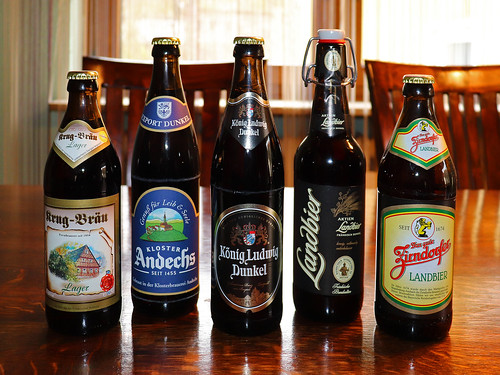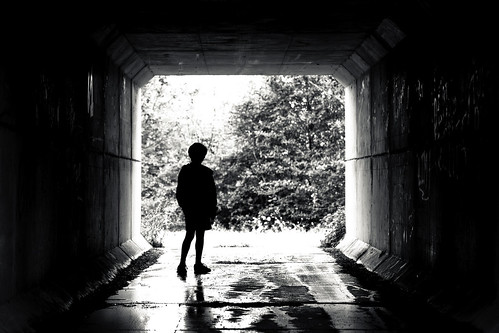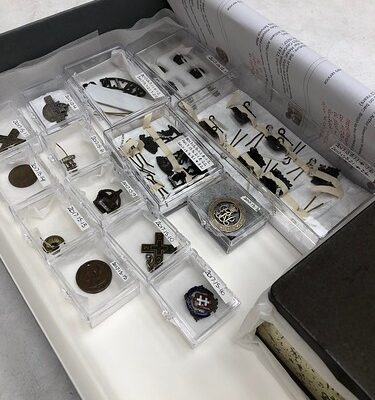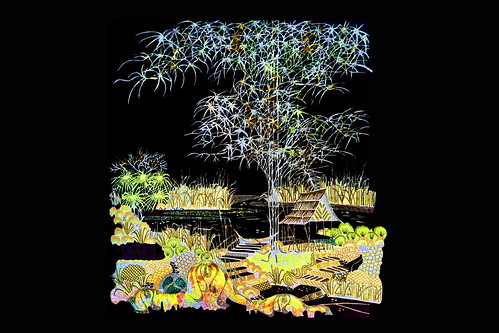
Photo taken at home during self-isolation. From left to right: 1) Krug-Bräu Lager, Breitenlesau, Upper Franconia, 2) Kloster Andechs Export Dunkel, Andechs, Upper Bavaria, 3) König Ludwig Dunkel, Kaltenberg, Upper Bavaria, 4) Aktien Landbier Fränkisch Dunkel, Bayreuth, Upper Franconia, and 5) Zirndorfer Landbier, Zirndorf, Middle Franconia. Taken in Georgensgmuend, Franconia (Bavaria)
While staying at home and killing some time, I played around with my new camera again and took a picture of these five Bavarian beers. The question was: Which one should I drink first? Well, it was a tough call, but after weighing the pros and cons of all five bottles, I decided for the middle one.
Some background information:
Franconia, the northern part of Bavaria and the region where I live, still has the highest density of beer breweries in Germany. In particular Upper Franconia, is still home to a lot of family-owned little breweries that brew their very unique types of beer. Until some years ago, Franconia was even the area with the highest density of breweries in the world, but the rapid development of tiny craft beer breweries elsewhere, mainly in the US, in the last couple of years has costed Franconia this inofficial world title.
However, it is still correct to say that Franconia has the highest density of traditional breweries in the world. In an area of just 23,000 square kilometres, about 300 breweries brew their traditional types of beer. It should also be mentioned, that many alcoholic beverages that are named "beer" in other countries, cannot be named "beer" in Germany too. Instead, they have to be named "shandy" or "beer mixed drink".
The reason is the Bavarian Reinheitsgebot (in English: "purity order") from 1516, that was applied consistently across all of Germany in 1906 and is effective since then, despite the fact that some changes were made over the centuries. According to this law, only four ingredients are permitted to brew beer. These are water, grain, hops and yeast. As opposed to other countries, additional flavourings, like vanilla, lemon or cherry flavour, are forbidden strictly over here. As a consequence, a brewery that brews corresponding types of beer elsewhere cannot be called a beer brewery in Germany too and its corresponding types of beer also cannot be named "beer" in my country.
Some additional information about the types of beer on my photo:
1) Krug-Bräu is a family brewery founded in 1834. It also comprises a brewery inn and a beer garden. The brewery is situated in the village of Breitenlesau, which belongs to the municipality of Waischenfeld. Both Waischenfeld and Breitenlesau are located in the Franconian Switzerland, about 50 km to the north of the city of Nuremberg.
The brewery Krug-Bräu produces six different beer types and two shandies. The beer on this photo is a dark lager which is brewed by using different types of malt. That’s why this beer is neither sweet nor bitter, but well-balanced. The first sip tastes a bit caramelised. The hop is dominating, but accompanied by the moderate and slightly smoky sweetness of the malt. The finish is warming and a bit bready. On balance it is a very smooth beer.
2) Kloster Andechs is a monastery brewery, situated in the bishopric of Augsburg to the southwest of Munich. The Ammersee lake is located just two kilometres to the west of the Benedictine monastery. The monastery was founded in 1455 and beer is brewed there since then. The brewery also comprises an inn and a beer garden, which is a popular destination for day-trippers from Munich and elsewhere.
The brewery of Kloster Andechs produces eight different types of beer and has a production of more than 100,000 hectolitres. The beer on this photo is a dark beer with a chestnut brown colour. The first sip is quite smoky with malty flavours and a hint of caramel and cacao. On the palate, dark chocolate is rather dominating, accompanied by the flavour of roasted malt. On the whole it is an effervescent, fizzy, very well-balanced beer and one of my favourites.
3) The König Ludwig brewery is located at Castle Kaltenberg, about 45 km to the west of the city of Munich. The castle was already built in 1292 by the Bavarian duke Rudolph I, but the brewery opened not before 1871. Today, the brewery has four sites, all of them in Upper Bavaria. It produces altogether 340,000 hectolitres of beer each year, whereby 100,000 hectolitres are still produced at Kaltenberg.
The König Ludwig brewery also comprises a brewery inn and a beer garden right on the castle grounds. It brews nine different types of beer. The beer on this photo is a dark beer with a rather dark colour and the flavour of caramel. The hop is also quite dominant, which adds a bitter flavour. There’s some dark chocolate and coffee on the palate. On balance it is a rather bitter beer, but still quite pleasant to drink.
4) The Bayreuther Bierbrauerei AG was founded in 1857. It is located in the Upper Franconian city of Bayreuth. The brewery is a joint stock company, whose shares are traded on the stock market and hence, can be acquired by everybody. However, a great block of stocks is in possession of the Bayreuth brewer family Maisel.
The brewery also includes a beer garden with more than 1,000 seats and an old rock-cut cellar, where the beer is stored. It produces eight different types of beer. The beer on this photo is a bottom-fermented dark beer. The first sip is a bit sweet, but also rather yeasty and effervescent. On the palate roasted malt is dominating while a slight bitterness of the hop is always in the background. On balance it is an aromatic beer that is not as sweet as you would expect from a dark beer.
5) The Zirndorfer brewery in the town of Zirndorf near Nuremberg is a former family brewery that now belongs to the Tucher brewery and thereby, to the Radeberger Group. It looks back on a brewing tradition of more than 300 years, as beer is brewed there since 1674, when the brewery was founded by John Frederick, Margrave of Brandenburg-Ansbach. It also comprises a traditional brewery inn and a beer garden.
The Zirndorfer brewery produces just three different types of beer. The beer on my photo is a pale ale with a very stable head after being poured into a glass. The firs sip is quite malty and mild, but yet rather aromatic. The hop is very subtle. On the palate it offers a rather bready, malty and full-bodied mouthfeel. The finish could be a bit longer, but on the whole it is a quite tasty beer that is very pleasant to drink.
Posted by Silanov on 2020-04-22 04:16:17
Tagged: , EU , Europe , Germany , Deutschland , Bayern , Bavaria , Franken , Franconia , Middle Franconia , Mittelfranken , Georgensgmünd , Roth , coronavirus , corona , shutdown , lockdown , social distancing , self-isolation , curfew , Ausgangsbeschränkung , beer , Bier , ale , bière , cerveza , пиво , piwo , cerveja , dark ale , Dunkles , Dunkelbier , Lager , pale ale , pale beer , Helles , Hellbier , Vollbier , Export , bottles , Flaschen , brewery , Brauerei , alcohol , Alkohol , alcoholic , alkoholisch , drink , beverage , Getränk , Andechs , Andechser , Kloster Andechs , Krug-Bräu , Bayreuth , Bayreuther Bierbrauerei AG , Aktien-Bier , Aktien-Bräu , König Ludwig , König Ludwig Brauerei , Zirndorf , Zirndorfer , types of beer , Biersorten , close-up , Nahaufnahme , home , private home , at home , daheim , Zuhause , spring , Frühling , March , März , 2020







